3-Day East of Ireland Road Trip | 3 Itineraries from Dublin
From exploring the mysterious passage tombs of the Boyne Valley to climbing one of the very few quintessential Irish round towers open to the public in Kilkenny, the east of Ireland offers a fascinating destination best explored through a road trip from Dublin.
However, it would be foolish to assume that you can visit every wonderful heritage site dotting the east of the country from Drogheda to Waterford in just a few days. Driving the winding and sometimes narrow Irish roads always takes more time than expected, and choices must be made.
Having lived on this side of the country for many years, I have put together a selection of 3-day east of Ireland road trips from Dublin based on my experience and favourite heritage sites. Each of these itineraries focuses on different parts of the country, with the guiding principle that you should spend more time experiencing and exploring Ireland’s heritage than stuck behind the wheel.
I hope these itineraries inspire you to hit the roads of the picturesque east of Ireland.
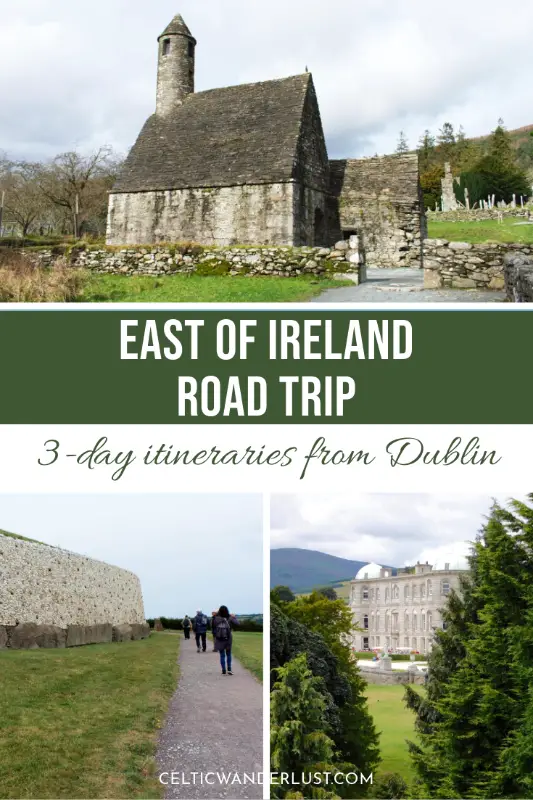
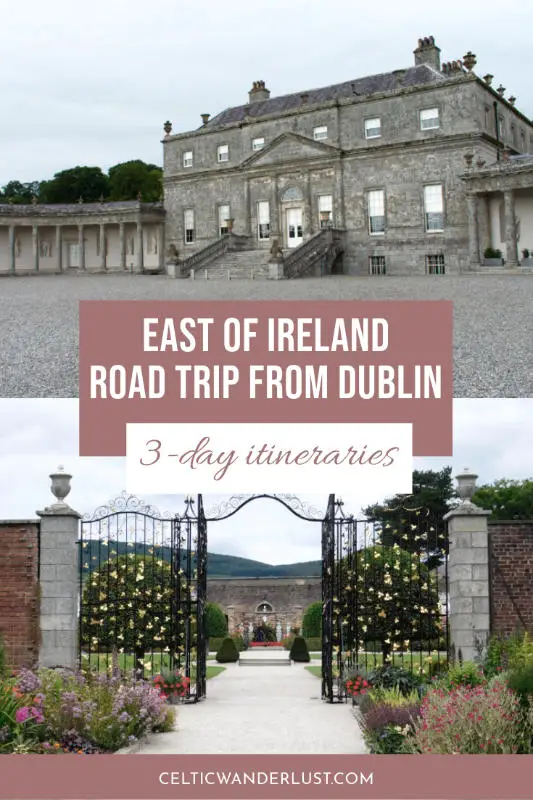
Getting Ready for Your East of Ireland Road Trip from Dublin
When it comes to renting a car for your 3-day East of Ireland road trip, Dublin Airport is certainly the most convenient location. The largest car rental agencies have desks there, offering a broad range of vehicle options. Plus, access in and out of Dublin airport is relatively easy.
However, it’s essential to plan ahead and book your rental in advance, as last-minute bookings could be costly. To secure the best deal, I highly recommend comparing prices on a platform like rentalcars.com.
Make sure to check the age restrictions, the type of car insurance available, and confirm the accepted payment methods, as not all car rental companies accept debit cards over credit cards.
Don’t forget to bring your driving licence with you. If you hold a driving licence issued by an EU/EEA member state, there’s no need to request an international driving permit before going on your Irish road trip. US travellers are also allowed on Irish roads with their full US driving licence.
Finally, consider travel insurance for your trip to Ireland. Heymondo provides customizable coverage and a handy assistance app for peace of mind during your Irish road trip.
3-Day East of Ireland Road Trip | North County Dublin & the Boyne Valley
If driving isn’t your favourite activity, but you still want to see many of Ireland’s well-known heritage sites, this 3-day itinerary should accomplish that. The historic Boyne Valley is so rich in heritage sites that you won’t need to spend hours behind the wheel driving from one to the next.
Day 1 – North County Dublin
Day 1 will be dedicated to the east coast, exploring picturesque seaside towns north of Dublin and centuries-old castles.
Howth
Collect your rental car at Dublin Airport, but don’t leave the area right away. If you haven’t been to Howth yet, now is your chance to swing by this hugely popular coastal town just north of Dublin.
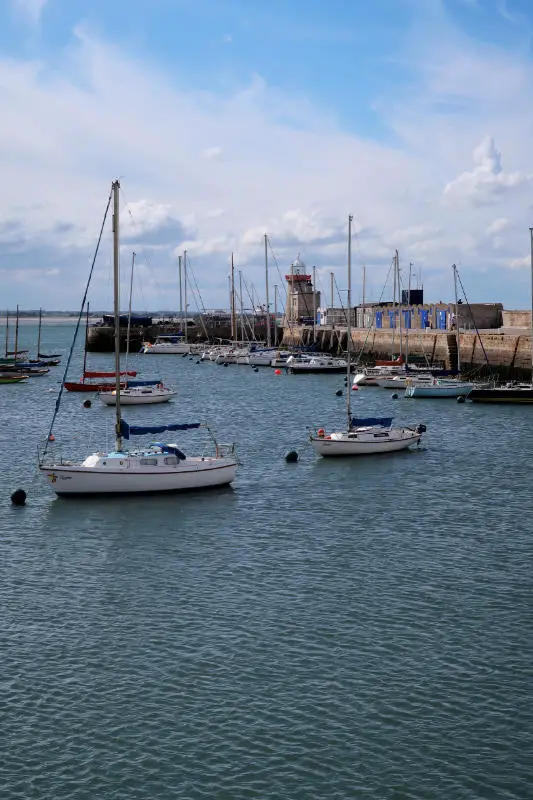
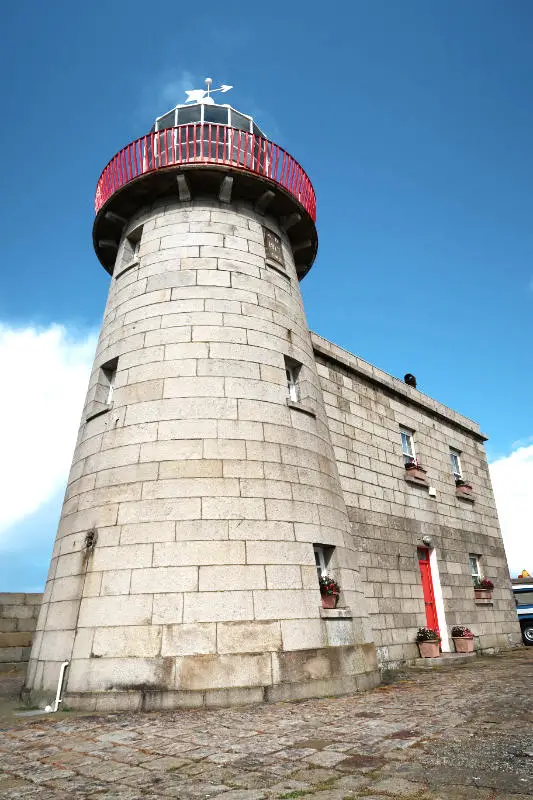
The walk to the end of the protective pier, where stands one of Dublin’s most charming lighthouses, is definitely the highlight. The panoramic view over the sea, the seabird sanctuary in the distance, and the cliffs advancing into the water are breathtaking. On weekends, a food market can be found near the train station, where you can stock up on treats for your road trip.
Malahide
Only a half-hour drive north of Howth, Malahide is one of my favourite places on the east coast of Ireland. Its medieval castle, with crenellated towers and walls covered with ivy, is simply picture-perfect.
This historic place was in the ownership of the same family since their arrival in the 12th century during the Anglo-Norman invasion, until its last descendant immigrated to Australia in the 1970s. The guided tour is a must-do. Don’t forget to visit the walled garden as well; it’s rather enchanting with its pond, palm trees and Victorian greenhouses.
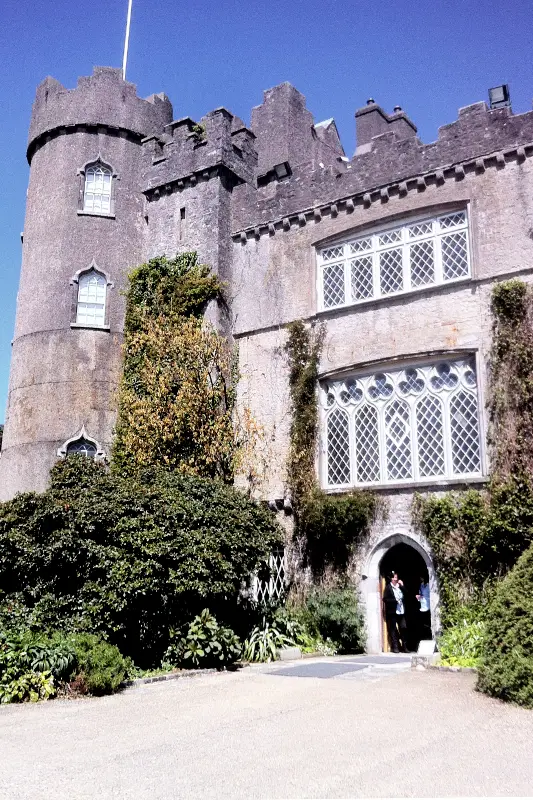
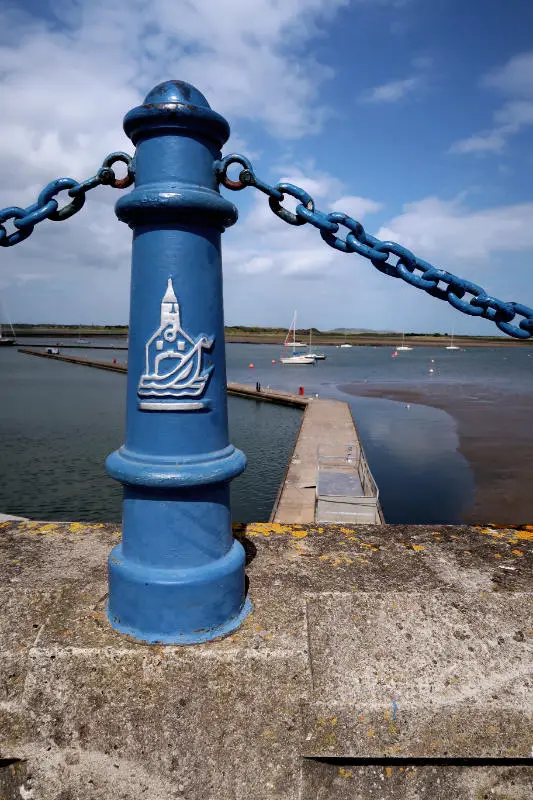
With its bustling main street, Malahide is also the ideal place for lunch before hitting the road again. Cafés, pubs, and restaurants abound, with tables spilling onto the pavements in the summer as the main street is closed off to traffic.
Ardgillan Castle
Another 30-minute drive north brings you to one more historic property, Ardgillan Castle. The 18th-century country house is mostly known for its magnificent gardens, which you can explore for free. Don’t forget to venture to the back of the house to catch the amazing view over the sea. The beach in Skerries is just minutes away if you fancy a last dip before we leave the coast behind.
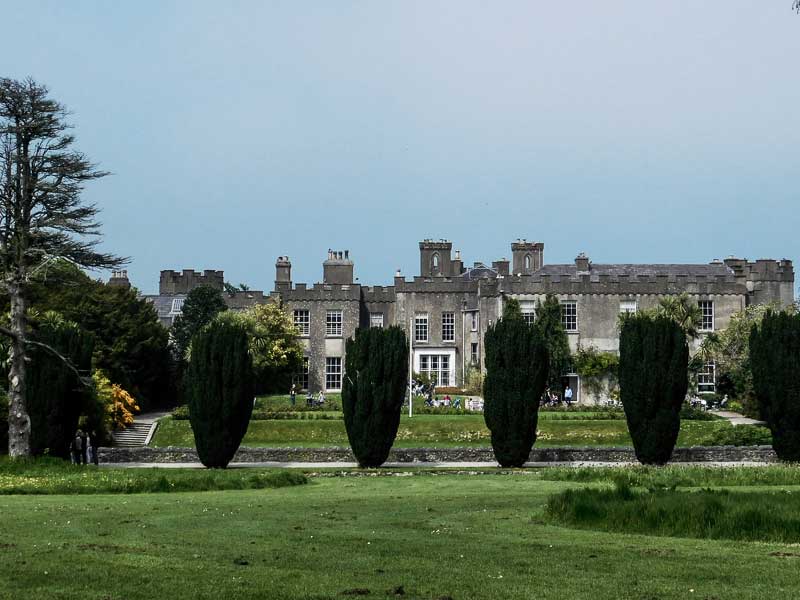
Drogheda
Roughly 30 km north of Ardgillan Castle, Drogheda is the gateway to the historic Boyne Valley. As the main city in the area, it’s a convenient stop for the night.
While not overly touristy, I found the old and bustling part of the city quite charming. I was particularly struck by the imposing St. Laurence’s Gate, a rare defensive structure from the Middle Ages still standing today right in the middle of the city. Be sure not to miss the magnificent, neo-Gothic St. Peter’s Church, where you can find the shrine of St. Oliver Plunkett, the archbishop of Armagh who died as a Catholic martyr in 1681.
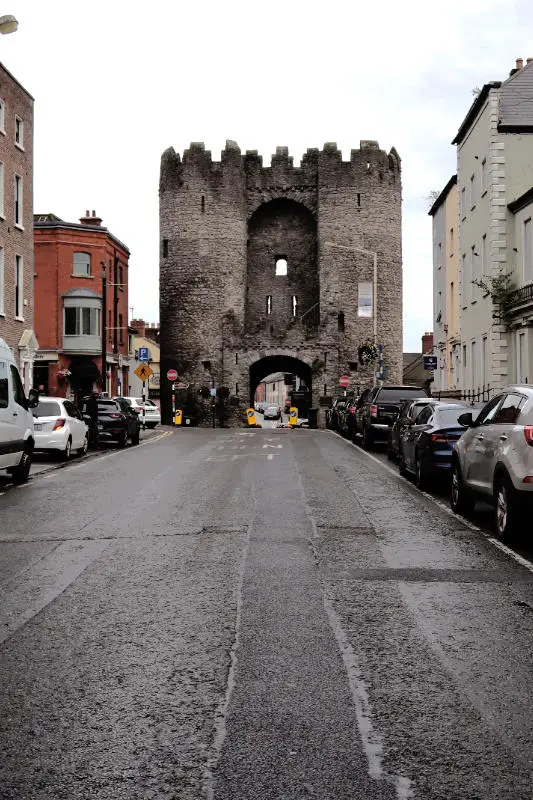
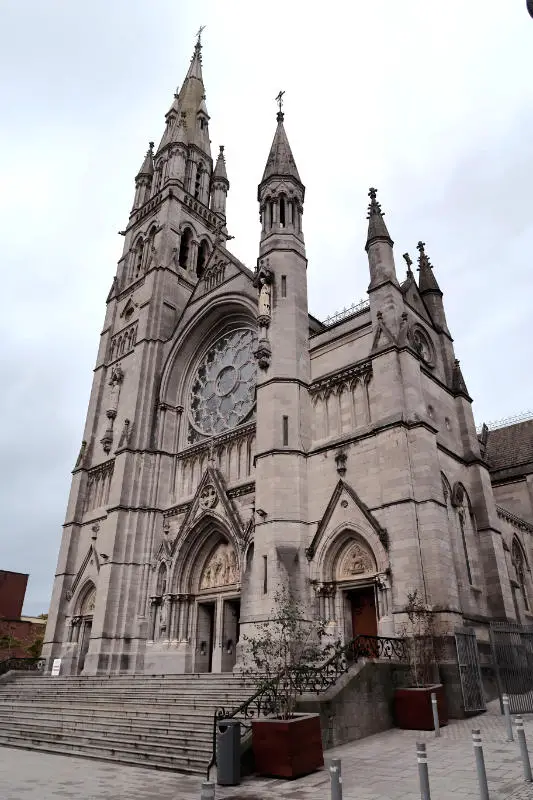
If you decide to eat in town, you’ll find a good selection of cafés, pubs, and restaurants along West Street. I recommend the Bare Food Company café for plenty of healthy options.
Where to Sleep in Drogheda:
- The Scholars Townhouse Hotel, once a 19th-century monastery, has been delightfully transformed into a modern hotel while retaining some original features and its distinctive character.
- The Boyne Valley Hotel is a 3-star establishment located within a converted 19th-century mansion, set amid a large and tranquil park on the outskirts of Drogheda.
Day 2 – The Boyne Valley, Part 1
The remaining two days of this East of Ireland itinerary will focus on the numerous heritage sites that dot the Boyne Valley.
Monasterboice
On the second day of this road trip through the east of Ireland, the treasures of the Boyne Valley, Ireland’s historic heart, await. Let’s start our morning journey with a short drive north of Drogheda where hides one of Ireland’s best-hidden gems.
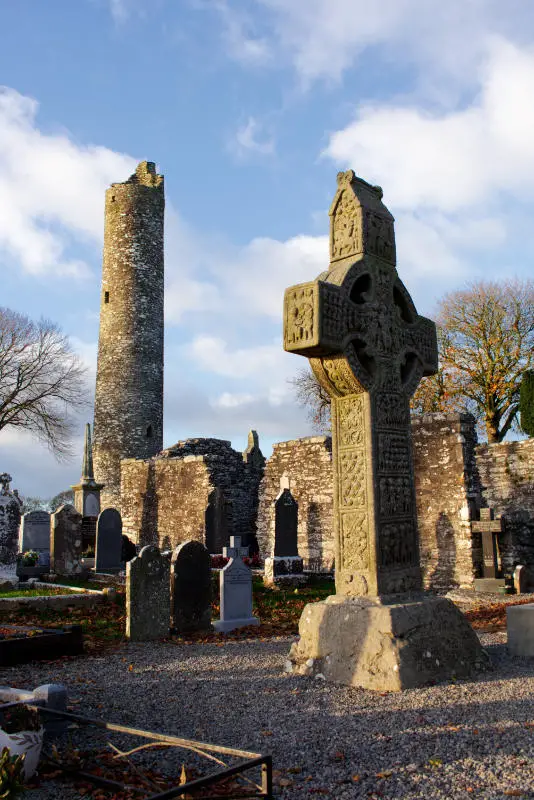
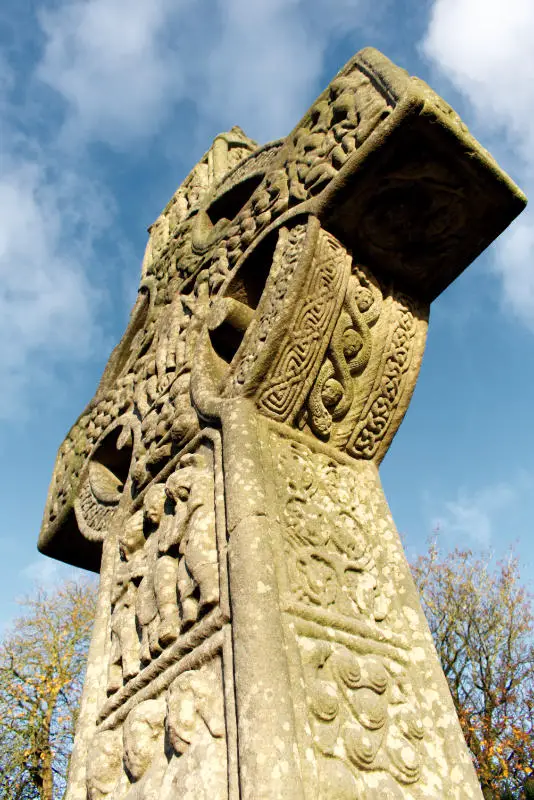
It’s not just the fantastically preserved round tower standing at the back of the cemetery in Monasterboice, a monastic settlement dating back to the 5th century, that attracts visitors to this quiet part of the countryside. It’s also the 9th-century (or 10th-century, experts are not certain) high crosses towering above the tombs that make this place so unique. The impressive 6-metre-tall Muirdeach’s High Cross is especially awe-inspiring. Covered in intricate carvings representing religious events and themes, this massive cross is considered the finest example of high crosses in Ireland.
Old Mellifont Abbey
The Boyne Valley is known for its rich early Christian heritage, and Old Mellifont Abbey is just one superb example of that. Although supposedly only a 10-minute drive from Monasterboice, Old Mellifont Abbey proved elusive when I visited. Ensure your GPS or navigation app is activated as you drive the maze-like and narrow roads of the Boyne Valley to avoid getting lost.
At the end of a narrow stretch of road, Old Mellifont Abbey finally appears and welcomes visitors with its serene surroundings, befitting a monastery. Founded in the 12th century by St. Malachy, Mellifont was Ireland’s first Cistercian abbey, its architecture directly inspired by sister abbeys in France.
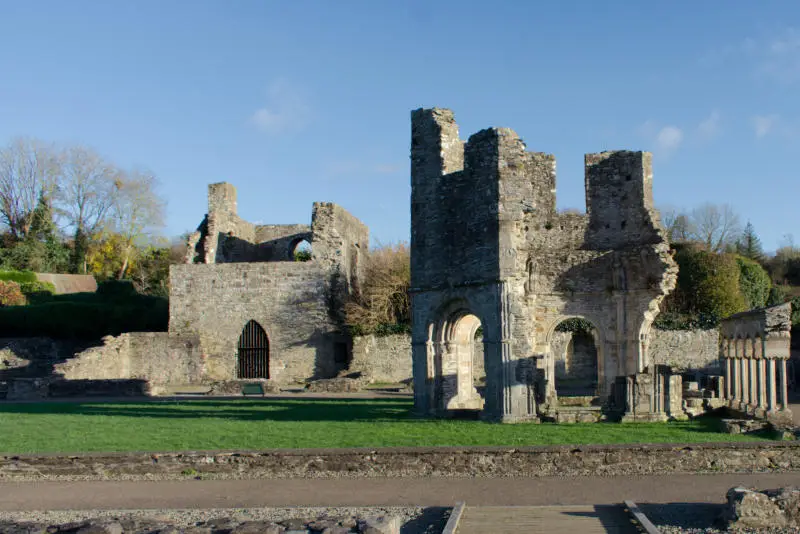
Dissolved in the 16th century, this once-wealthy abbey now stands in ruins. However, the foundations are still visible, and a few buildings remain, providing valuable insight into the former thriving community of 400 individuals.
Slane
Spend the rest of your second day in Slane, starting with a well-deserved lunch in one of the charming cafés or restaurants in town. Then, head to Slane’s main attraction: its castle! Still owned by the Conyngham family, who remodelled the historic house in the 18th century, Slane Castle offers guided tours. Explore the grand reception rooms on the first floor while listening to entertaining anecdotes about the family’s ancestors. That includes the mistress of the king of England! Slane Castle also boasts its own distillery if you fancy some whiskey tasting.
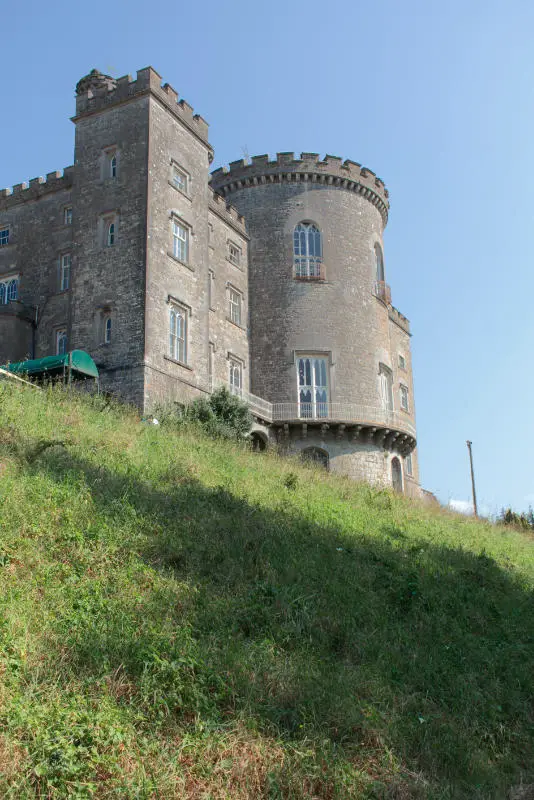
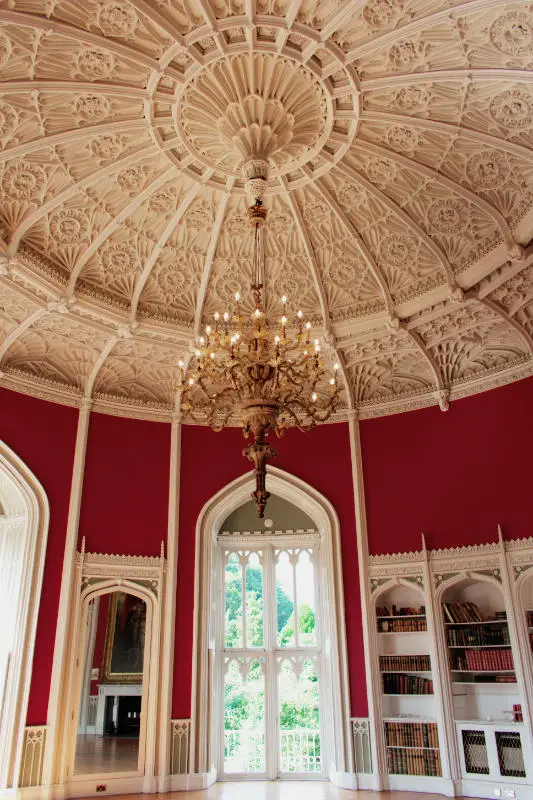
The Hill of Slane is another fascinating sight to explore while you are in town. Just a few minutes’ drive from the castle, the Hill of Slane is steeped in mythology. Legend has it that in 433 AD, St. Patrick visited and lit a Paschal fire on the hill, in defiance of the Irish High King. Impressed by his devotion, the king allowed the saint to continue his missionary work.
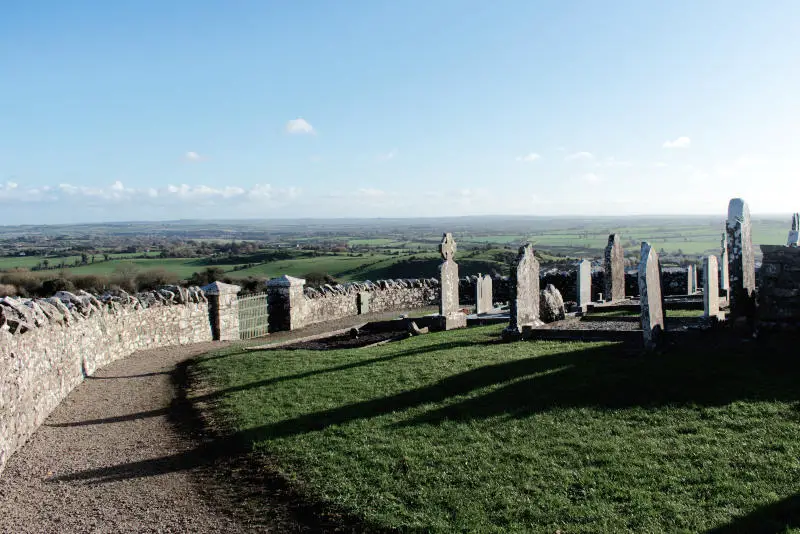
Subsequently, a monastery was founded on the Hill of Slane by St. Erc, a follower of St. Patrick. It was replaced in the 16th century by a Franciscan monastery, the ruins of which can be contemplated today, surrounded by a cemetery atop the hill. Not to mention, the view over the rolling countryside is truly mesmerising.
Where to sleep in Slane:
- Conyngham Arms Hotel: Conveniently situated on Main Street, this 3-star boutique hotel is a former 18th-century coach inn with elegantly appointed rooms.
- Boyne House Slane: Transport yourself back in time at this period house located in the heart of Slane, where rooms are furnished with antique pieces.
- Rock Farm Slane: Enjoy a comfortable stay in a yurt or shepherd’s hut for a unique glamping experience by the River Boyne with views over Slane Castle.
Day 3 – The Boyne Valley, Part 2
Day 3 of this itinerary through the East of Ireland will unveil more fascinating treasures of the Boyne Valley.
Brú na Bóinne
In the morning, just a few minutes behind the wheel will take you to one of Ireland’s best-known Neolithic sites, Brú na Bóinne. It’s essential to book your guided tour in advance, as this historical site is very popular and only accommodates a few people at each allocated time.
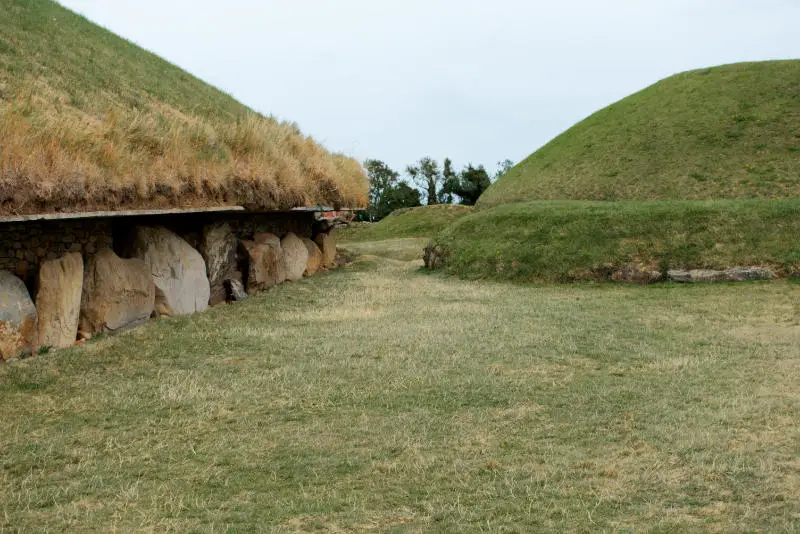
The tour will keep you engaged for 2 to 3 hours, beginning with an exhibition to provide context for the famous passage tombs of Newgrange, Knowth, and Dowth. A minibus will then transport you to Knowth for a fascinating guided tour of the exteriors of the tomb, where you can admire hundreds of mysterious carvings on massive kerb stones. The tour concludes with an exploration of Newgrange, where a guide will lead you within the tomb itself for a journey back in time of 5,000 years.
Trim
The next and final stop on your 3-day east of Ireland road trip is the historic town of Trim. The journey from Brú na Bóinne is around 40 minutes, so you should arrive around lunchtime. The charming town founded on the River Boyne has several cafés to choose from before heading to your next visit: Trim Castle.
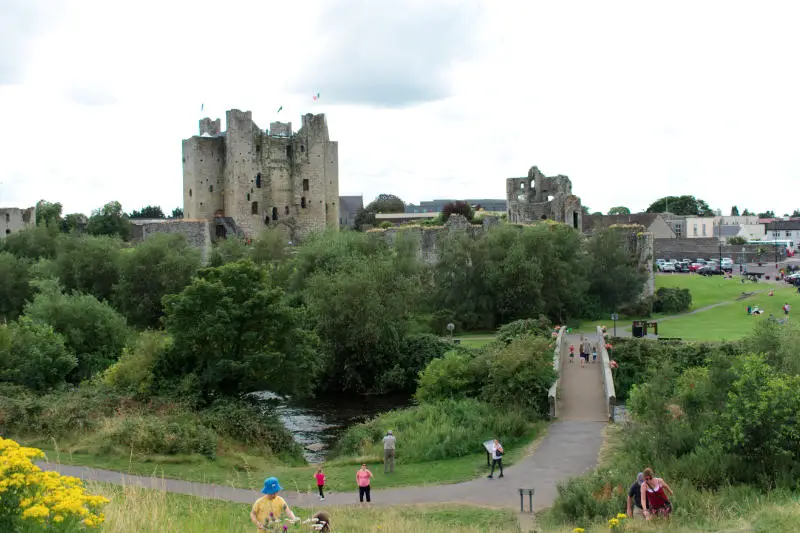
Dating from the 12th century, Trim Castle is an impressive Norman fortress constructed by Hugh de Lacy to assert his control over the kingdom of Meath. While mainly in ruins, the castle displays incredible dimensions. Its keep, still standing, can be accessed via a guided tour that takes visitors all the way to the top for incredible views over the surrounding countryside. I only paid a few euros for the guided tour, which turned out to be utterly fascinating.
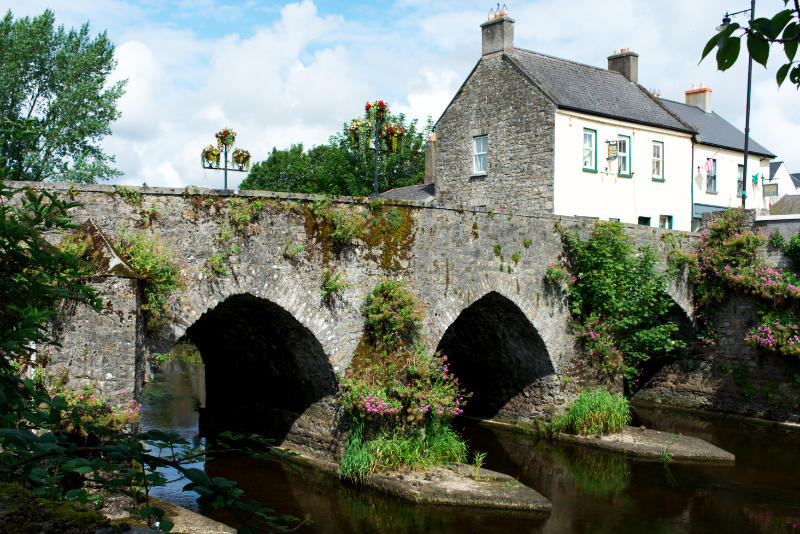
Just a short walk across from the river, the ruins of the Augustinian monastery of St. Mary’s at the top of the hill serve as a great viewpoint overlooking the castle.
Finally, you should allocate an hour to return to Dublin Airport from Trim. Traffic can be heavy around late afternoon as commuters finish work.
3-Day East of Ireland Road Trip | The Boyne Valley & Co. Wicklow
This second road trip itinerary through the East of Ireland covers more ground as we explore two regions with much to offer avid fans of Irish heritage: the Boyne Valley and County Wicklow.
Day 1 – The Boyne Valley
On your first day on the road, you’ll get to see some of the best sites in the Boyne Valley.
Malahide
To start your East of Ireland road trip, pick up your rental car at Dublin Airport and begin your journey with a stop in historic Malahide, only 10 km away.
As I mentioned before, nestled in this charming coastal town lies Malahide Castle. Although it has changed over the centuries, the castle has retained its timeless medieval appearance, making it one of my favourite Irish castles to visit.
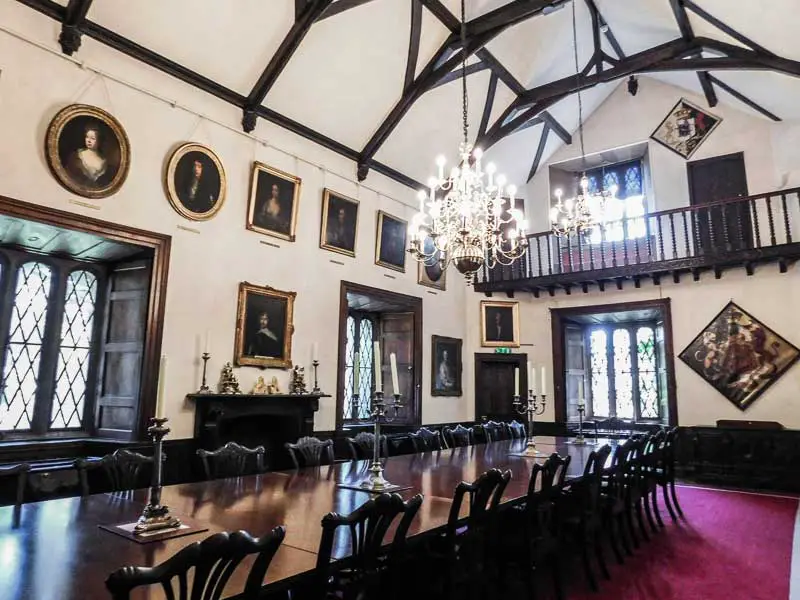
Formerly in the hands of the same family for a remarkable 800 years, the Malahide Castle offers a glimpse into centuries gone by. Don’t miss out on the guided tour, which provides access to stunning interiors spanning different eras. The 16th-century wood-panelled Oak Room and the exposed beam ceiling in the Great Hall will no doubt transport you back in time. While you’re at Malahide Castle, take some time to wander through the enchanting walled garden, a delight during hot summer days.
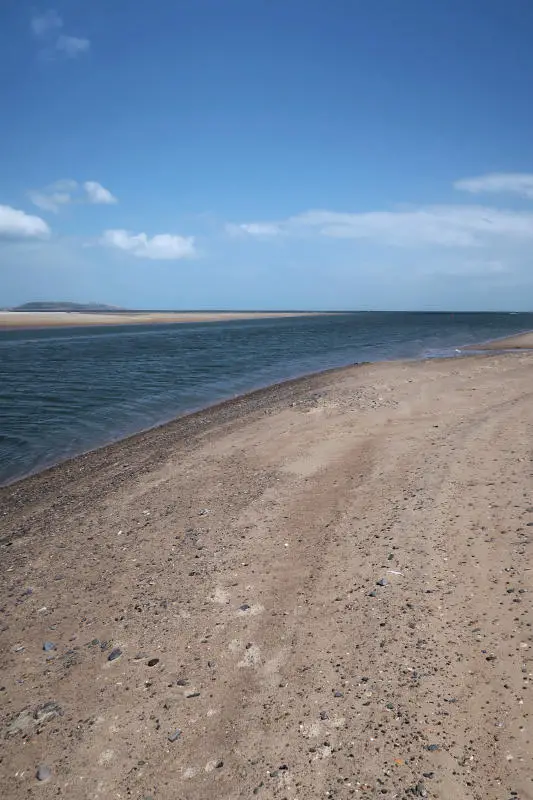
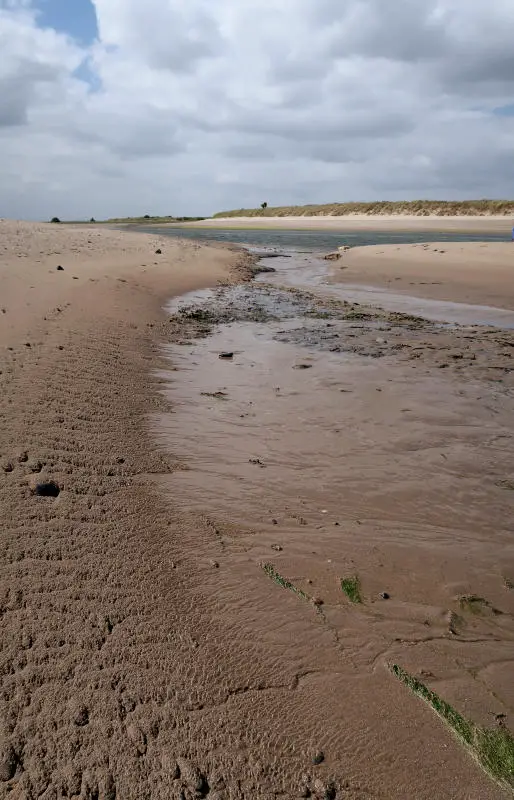
If time allows, take a stroll along the sandy Malahide estuary, an area of ecological significance. That will surely stimulate your appetite. Treat yourself to a delicious lunch at one of the many inviting restaurants or cafés lining Malahide’s main street to refuel before hitting the road again.
Brú na Bóinne
After lunch, make your way to world-famous Newgrange at Brú na Bóinne. As mentioned earlier, it’s crucial to book your guided tour in advance, as this historical site is extremely popular and can only accommodate a limited number of visitors at each scheduled time slot.
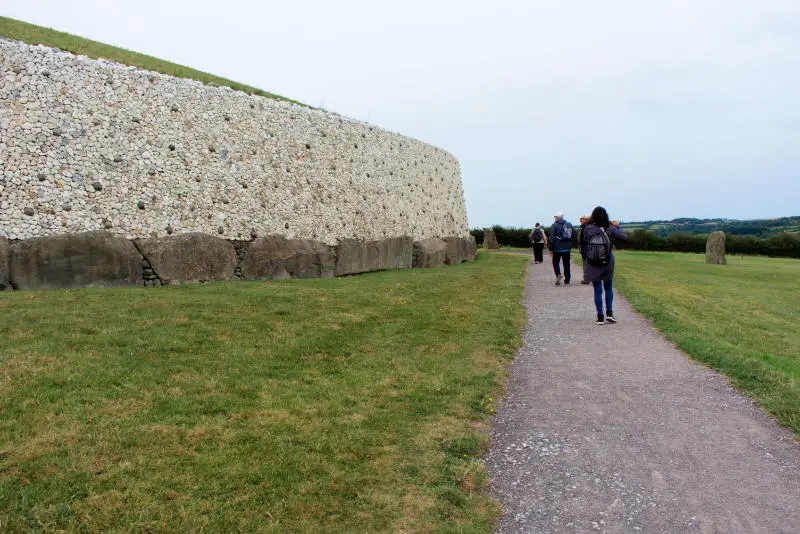
Allocate 2 to 3 hours for the entire visit. The tour begins with an exhibition that provides context for the Neolithic passage tombs of Brú na Bóinne. Next, a minibus will take you to Knowth, where you’ll experience a guided tour of the tomb exteriors, allowing you to marvel at hundreds of enigmatic carvings on massive kerb stones. The tour concludes with an exploration of Newgrange, where a guide will accompany you inside the 5,000-year-old tomb itself. Needless to say, if you are claustrophobic, you might want to skip that part of the tour!
Trim
45 minutes from Brú na Bóinne, Trim is the perfect town to conclude a day of exploration and spend the night. Its Norman castle, constructed in the 12th century, stands as the largest in Ireland. As I said before, I highly recommend the captivating guided tour of its keep, culminating at its summit where panoramic views of the Irish countryside await.
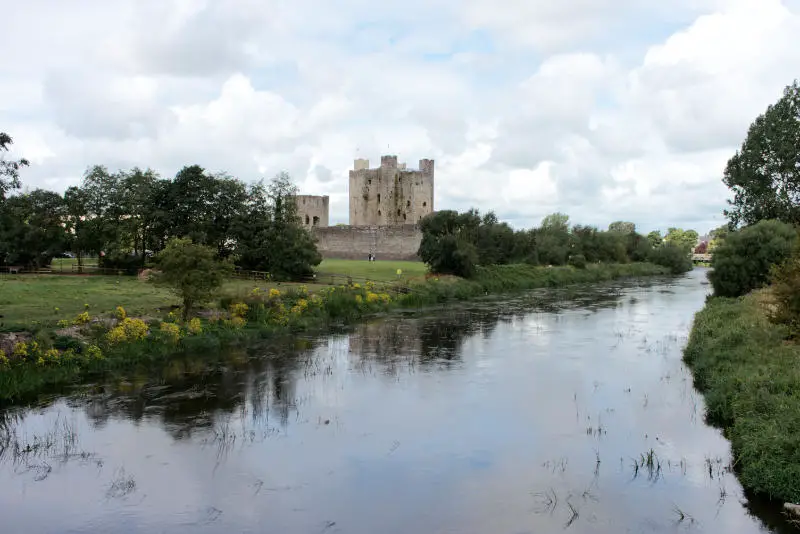
Fans of Braveheart may recognize Trim Castle as a filming location for the epic drama. Its keep was transformed into the Tower of London in the scene where the English king threw his son’s lover through the window. Does it ring a bell?
With its bakeries, cafés, and colourful pubs overlooking the River Boyne, Trim embodies the quintessential Irish town for a well needed stopover and to soak in the local atmosphere. Additionally, Trim boasts several hotels, providing ample options for accommodation.
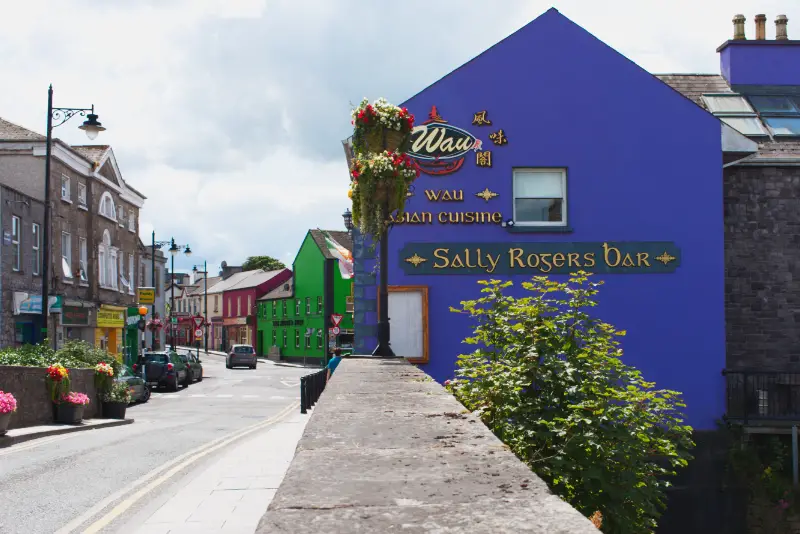
Where to sleep in Trim:
- Trim Castle Hotel: This modern 4-star hotel, situated right across from Trim Castle, is an obvious choice due to its prime location.
- Highfield House: This guesthouse, originally built in the 19th century as a maternity hospital, has retained many of its antique interior features while being lovingly converted by its new owners. Its ideal location, just a short walk to the castle, makes it a perfect choice for visitors.
- Brogans Bar & Hotel: If you opt to stay at this small and cosy hotel in the centre of Trim, you’ll enjoy live music in the evening.
Day 2 – West County Wicklow
Day 2 of this road trip will take you off the beaten path to two remarkable places in West County Wicklow before heading to the mountainous heart of the county.
Russborough House
After a well-deserved night’s rest in Trim, it’s time to bid farewell to the Boyne Valley and head to one of my favourite counties, Wicklow. The west of County Wicklow is nowhere near as popular as the east, which is regrettable but also provides an opportunity to escape the crowds.
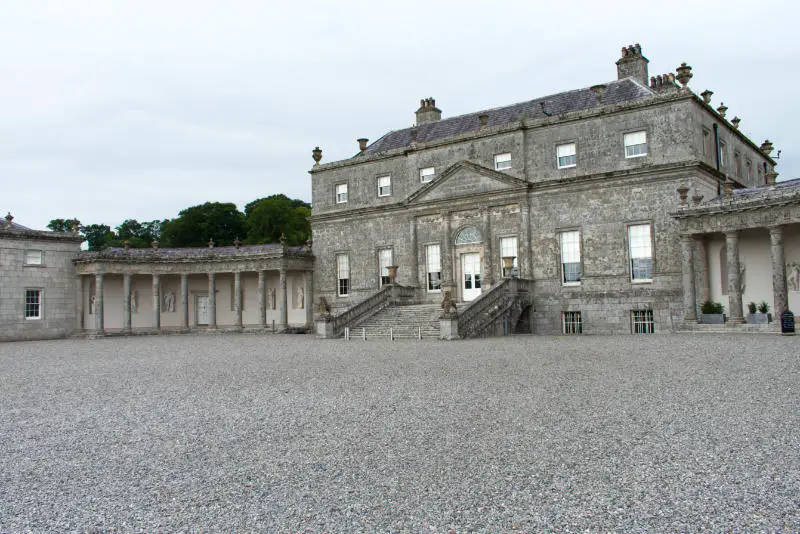
Just over an hour’s drive south of Trim, Russborough House is a hidden gem tucked away from the main tourist circuit. This 18th-century Palladian-style manor house is a perfect example of neoclassical architecture that was in vogue at the time.
Built for Joseph Leeson, the sole heir of his wealthy father, a Dublin brewer, Russborough House is magnificent in its proportions and showcases rich interiors of rococo and baroque styles. The self-guided tour of the ground floor reception rooms will delight fans of historic houses and grandiose architecture. The music and library rooms, frozen in time, allow visitors to imagine the lives of those privileged enough to reside within these walls.
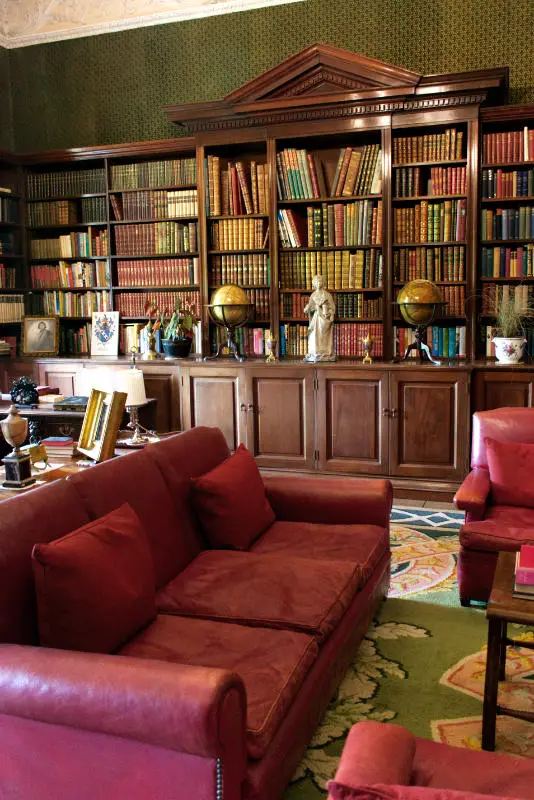
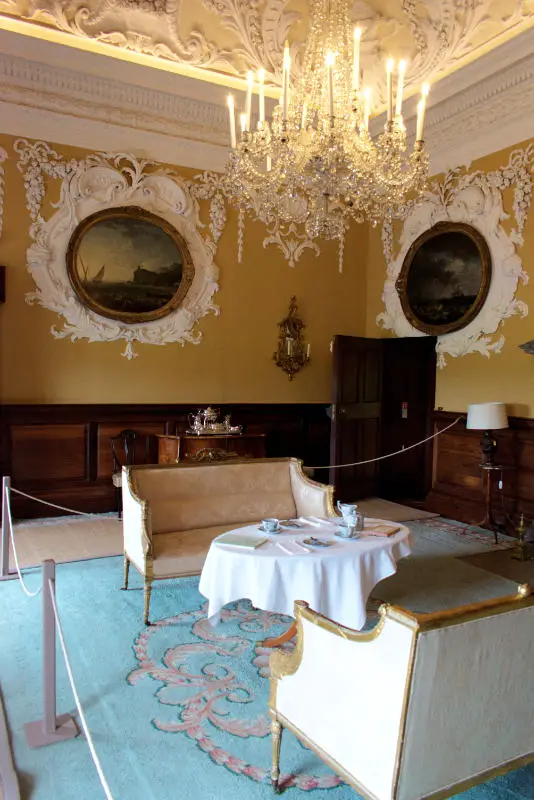
The Blessington Lakes
West County Wicklow is locally known for the Blessington Lakes, a man-made reservoir created in the 1940s and the largest of its kind in Ireland. The two lakes provide a picturesque backdrop for a scenic drive around the water, with the Wicklow Mountains looming in the background. Be aware that the road can be narrow!
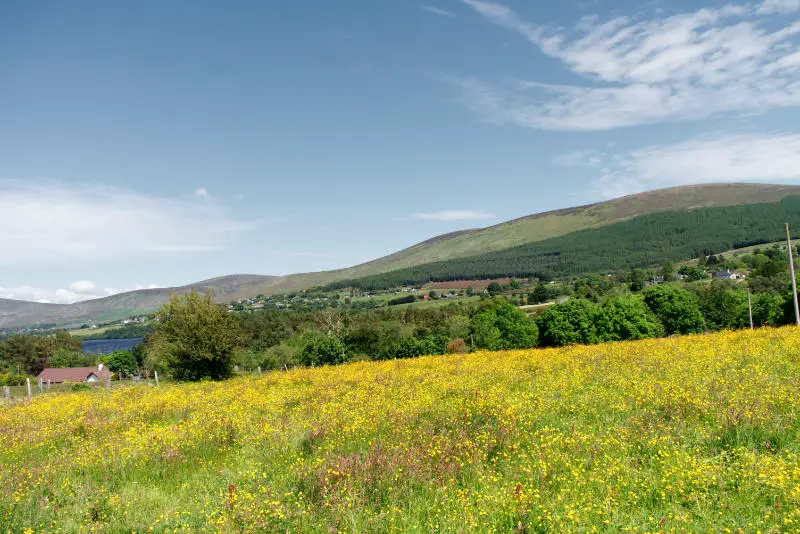
One of the best spots to take in the view while enjoying a restorative lunch is DJ Cullen Lake View Lounge, a pub with outdoor seating overlooking the Blessington Lakes, 20 minutes from Russborough House. I would recommend booking ahead during the high season to guarantee a table, as there aren’t many restaurants in the area.
Glendalough Monastic Site
From DJ Cullen Lake View Lounge, retrace your steps back to the R756 and head east towards Glendalough. The famous monastic site is roughly 30 minutes away, assuming you don’t stop along the way, which would be nearly impossible to resist. The landscape is so breathtaking that you’ll want to take your time and make the most of the small car parks available along the road to better appreciate the view over the mountains.
Once in Glendalough, you can park your car at the Visitor Center for a small fee and walk to the monastic site, just around the corner. Legend has it that St. Kevin founded the religious settlement in the 6th century in this remote valley of the two lakes, a place where he lived as a hermit.
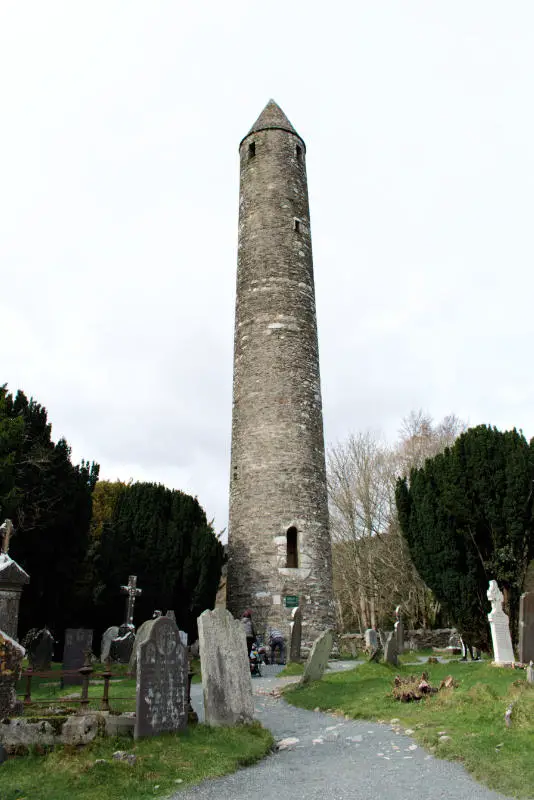
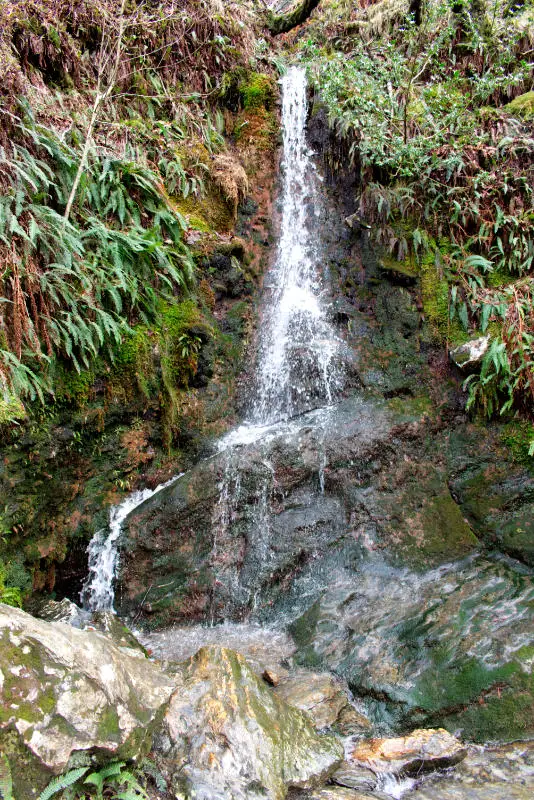
Among the ruins of no less than 5 churches, a round tower still stands today, set against the picturesque backdrop of the Glendalough valley. A boardwalk along the shore of the lower lake allows for a short stroll in the beautiful and lush surroundings. The valley is highly popular with hikers, thanks to walking trails leading all the way to the top, where they’ll be rewarded with jaw-dropping views over Glendalough.
You can spend the night in Glendalough, which offers several (but limited) accommodation options, ranging from hotels to glamping sites. Be sure to book before your arrival to secure a room in one of the most picturesque places to stay in Wicklow.
Where to sleep in Glendalough:
- Glendalough Hostel: A budget-friendly option right next to the monastic site of Glendalough. You can choose between dorms and private rooms.
- The Glendalough Hotel: A 3-star hotel with a peaceful surrounding, around the corner from the heritage site.
- Glendalough Glamping: Stay in a pod overlooking the mountain, just a short drive from the centre of Glendalough.
Day 3 – East County Wicklow
Day 3 of this East of Ireland road trip will be dedicated to exploring the colourful gardens and grand country houses of East Wicklow. If you find yourself short on time, feel free to skip one if needed.
Mount Usher Gardens
Established in the mid-19th century, Mount Usher Gardens are one of Wicklow’s most beautiful gardens and one of the finest examples of Robinsonian-style gardens in the country; a style which emphasises the imitation of nature rather than the attempt to control it.
With over 5,000 species of plants thriving in this hidden paradise in County Wicklow, Mount Usher Gardens are best explored with a map in hand so you can identify your favourite trees and flowers. As I don’t have green fingers, the map turned out to be invaluable! The property follows the River Vartry flowing right through it, with suspension bridges allowing visitors to cross from one bank to the other and providing unhindered views over the luxuriant gardens.
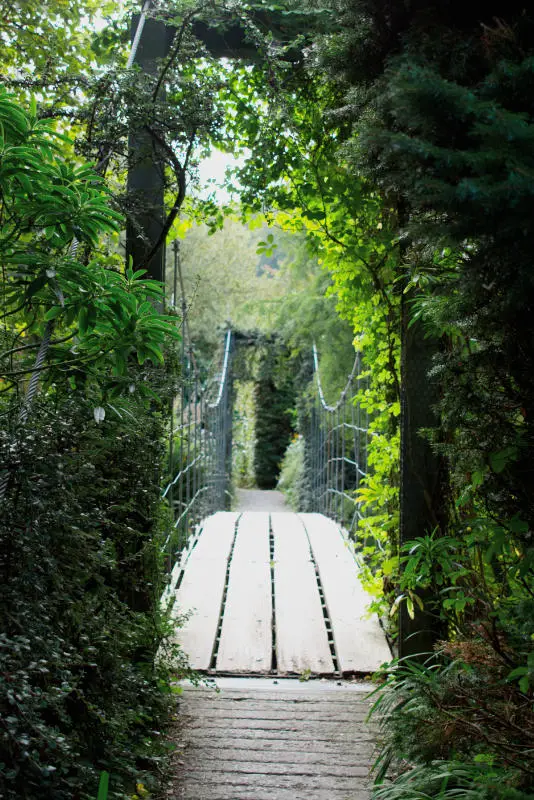
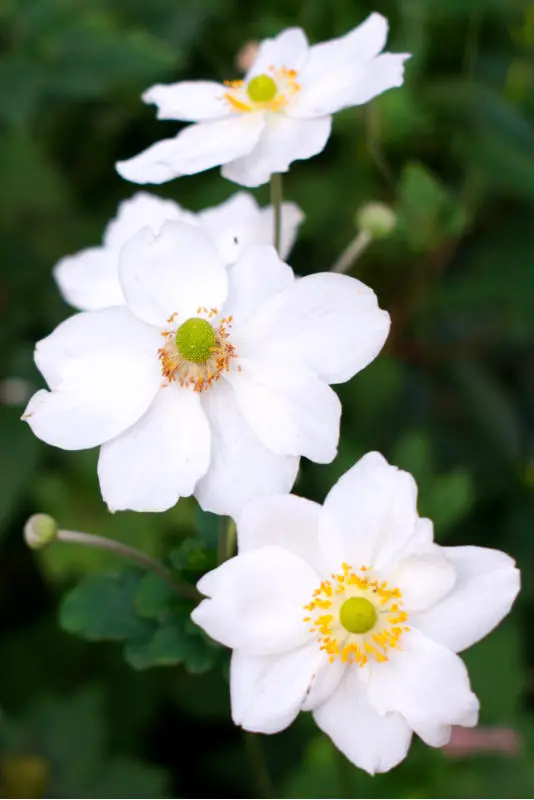
Mount Usher Gardens are leased to Avoca Handweavers. As you exit the gardens, you’ll find a few craft shops and cafés, perfect for a pick-me-up or a light lunch before hitting the road again.
Killruddery House and Gardens
Half an hour’s drive from Mount Usher Gardens lies an architectural jewel surrounded by the most romantic gardens, Killruddery House. Dating from the 17th century, this Tudor revival mansion has been in the family of the Earl of Meath for centuries and is today one of the most charming historical places to visit in Wicklow.
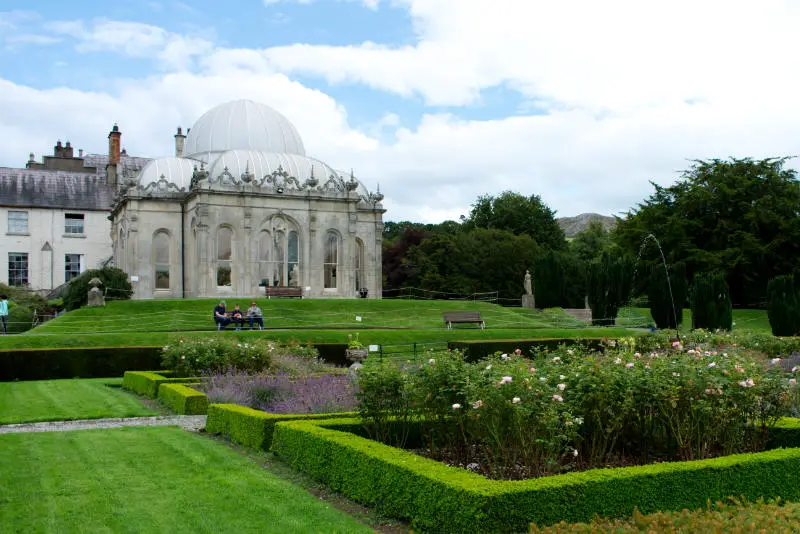
The guided tour of the ground floor reveals the Belgian and mercenary origins of the Brabazon family, powerful allies of the Anglo-Norman king during the invasion of Ireland. The grand wooden staircase, the centuries-old library overlooking the gardens, and the 19th-century glass dome of the Orangery are food for the imagination of what living in this magnificent residence can be.
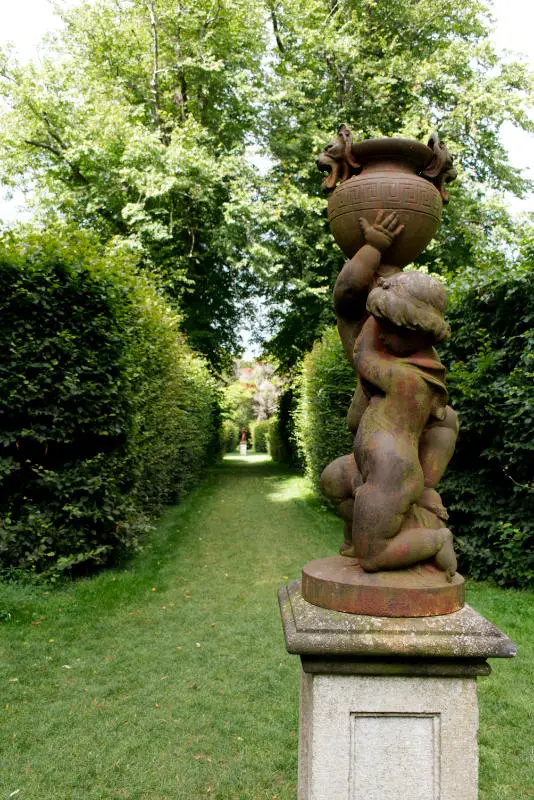
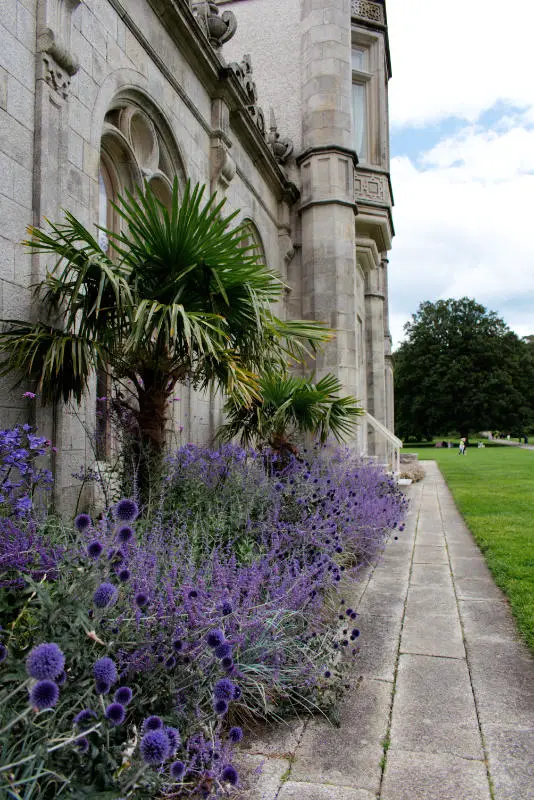
The exploration continues in the gardens with a walled garden transformed into an organic farm, water lilies thriving in ponds hidden from view by tall and manicured hedges, a formal garden designed by a disciple of the famous French royal gardener Le Nôtre, and more.
Powerscourt Gardens
End your road trip with a bang by visiting Powerscourt Gardens. This vast estate, just a 20-minute drive from Killruddery, is the pride of County Wicklow, once voted among the best gardens in the world by National Geographic.
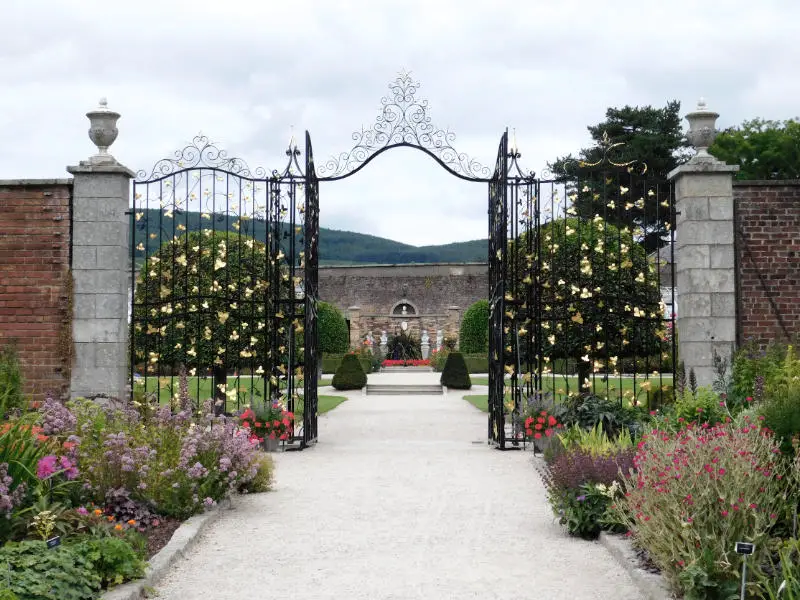
Sprawling at the back of an 18th-century mansion built for the first Viscount Powerscourt, the gardens are the result of centuries of dedication from the Powerscourt family. Italian-inspired terraces, ponds with fountains, a century-old Japanese garden, a traditional walled garden, colourful borders, and more await you in this incredible property.
From there, the drive is rather straightforward to the airport once you’re on the M50. Allocate approximately an hour to arrive at the airport and drop off your rental car.
3-Day East of Ireland Road Trip | The Cities of the South-East & Co. Wicklow
For those who don’t mind longer drives, this 3-day road trip will take them through the historic cities of Ireland’s South East before concluding with a few highlights of County Wicklow.
Day 1 – Kilkenny
Thanks to the M9 motorway, you should reach Kilkenny in under 2 hours from Dublin airport. Kilkenny is one of my top heritage towns in Ireland, and you can easily spend two entire days exploring its centuries-old heritage.
For this road trip, I would recommend spending at least a day to enjoy Kilkenny’s main attractions and bustling atmosphere. At the top of your must-do list should be a guided tour of Kilkenny Castle, once the property of one of Ireland’s most powerful families, the Butlers.
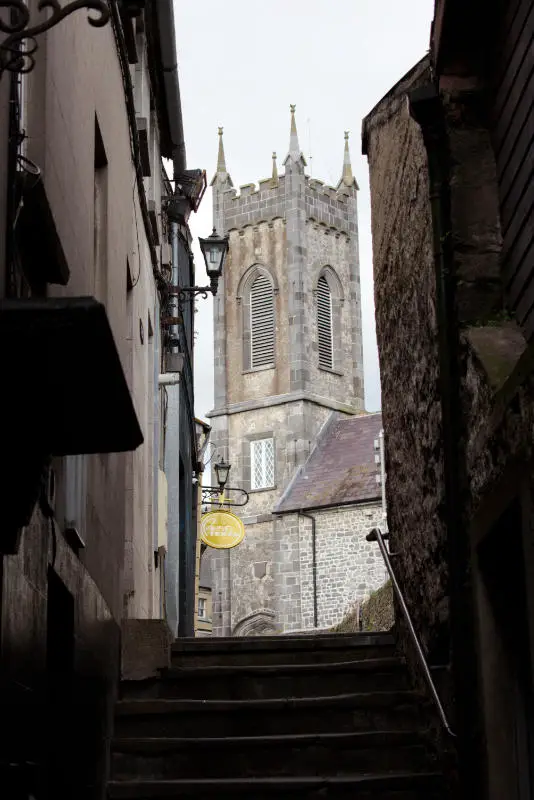
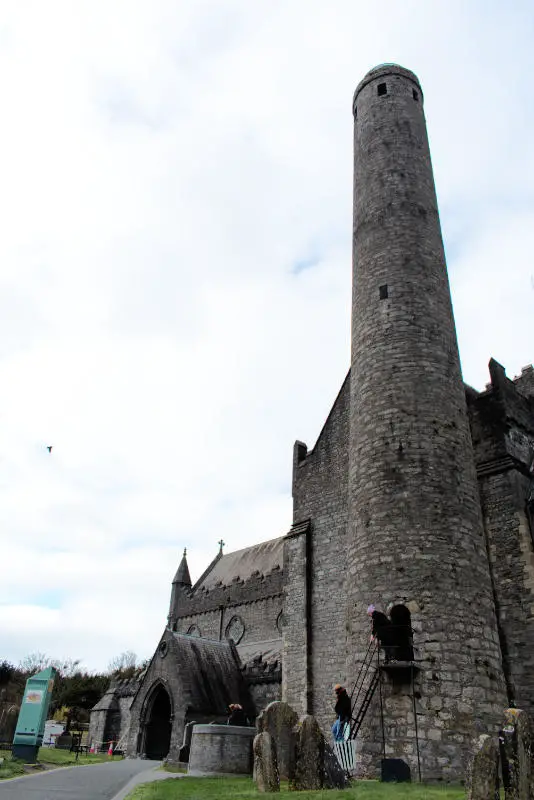
Likewise, a self-guided tour of the 13th-century early Gothic style St. Canice’s Cathedral, whose medieval features have been remarkably retained, cannot be missed. Of course, if height and narrow spaces don’t bother you, you have to climb the 9th-century, slightly leaning, St. Canice Tower. Once you squeeze yourself through the small door at the top (I swear, it is not that bad!), you’ll be rewarded with incredible views over the town.
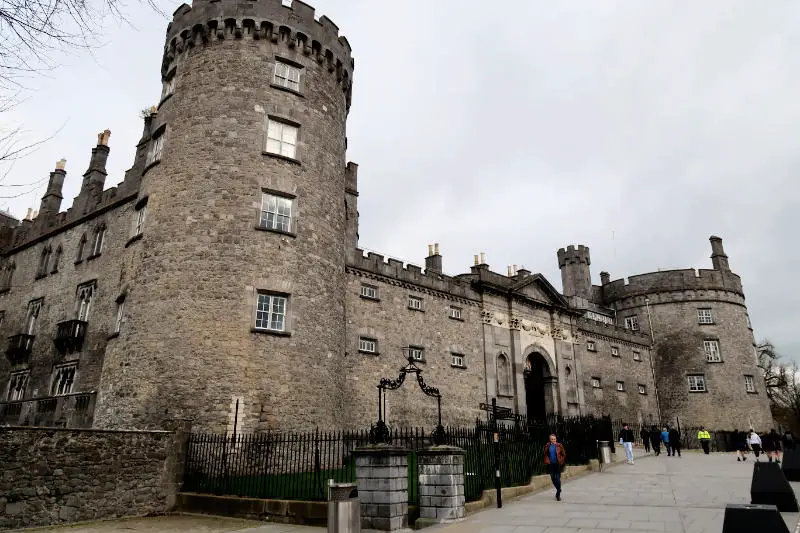
Among other fascinating historical sites to see in Kilkenny, I would include a walking tour through the city’s historic centre and exploring the Rothe House, a late 16th-century merchant townhouse.
There is no shortage of cafés and restaurants to refuel in Kilkenny’s bustling streets. St Kieran’s Street, High Street, and Parliament Street are especially worth your attention. Petronella is a restaurant that comes highly rated. For something lighter, I would recommend the Fig Tree Restaurant, a cosy spot on High Street offering great options for breakfast and baked treats.
Where to sleep in Kilkenny:
- River Court Hotel: I stayed at this 4-star contemporary hotel with stunning views of the river and castle, which also offers convenient parking right in the city centre. Read all about my experience at the River Court Hotel to learn more.
- Kilkenny Hibernian Hotel: For travellers seeking accommodation with character, this 18th-century former bank, now a 4-star lodging, is the perfect choice. Situated just around the corner from Kilkenny Castle, this luxurious hotel offers an ideal location to experience medieval Kilkenny.
- Butler House: For those seeking romance, Butler House is a luxury guesthouse that will exceed your expectations. Originally built in the 18th century as the dower house of Kilkenny Castle, this country house offers stunning views of the castle and is brimming with character. However, luxury comes at a price!
Day 2 – Waterford and Wexford
On day 2, we’ll be covering more ground, exploring two more historic cities in Ireland’s sunny southeast.
Waterford
The next stop on this itinerary through the east of Ireland is Waterford, located just under an hour from Kilkenny. As the oldest city in Ireland, founded by the Vikings in 914, it rightly deserves some of your time.
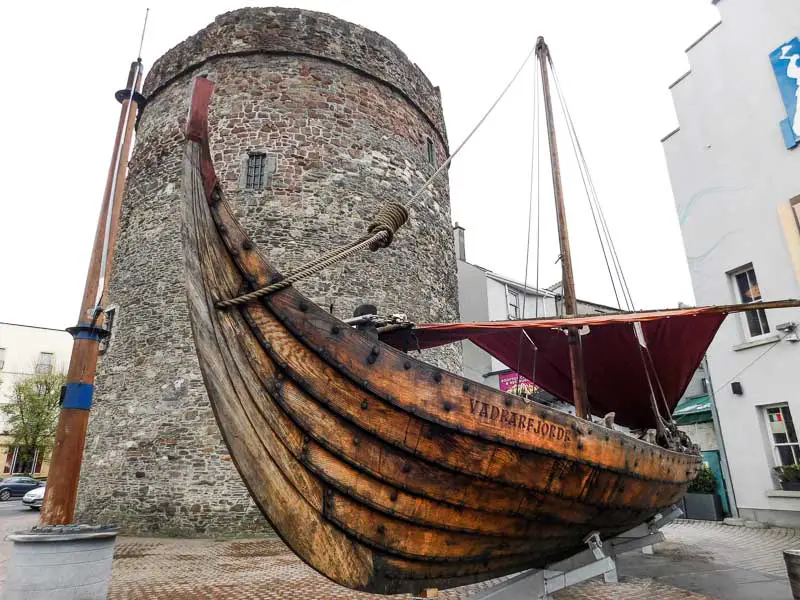
Vadrarfjordr, as it was once known in Old Norse, hides an award-winning medieval museum with artefacts that blew my mind! More specifically, the museum is the proud owner of 15th-century cloth-of-gold vestments, the only full set of medieval vestments to survive in Northern Europe. They were rediscovered a century after being hidden in the cathedral’s floor for safekeeping as Cromwell’s army besieged the city in 1650.
Among the things to do in Waterford, a self-guided tour of the elegant interiors of the 18th-century Bishop’s Palace is a must-add to your list. If you appreciate highly skilled craftsmanship, the Waterford Crystal factory is open for guided tours.
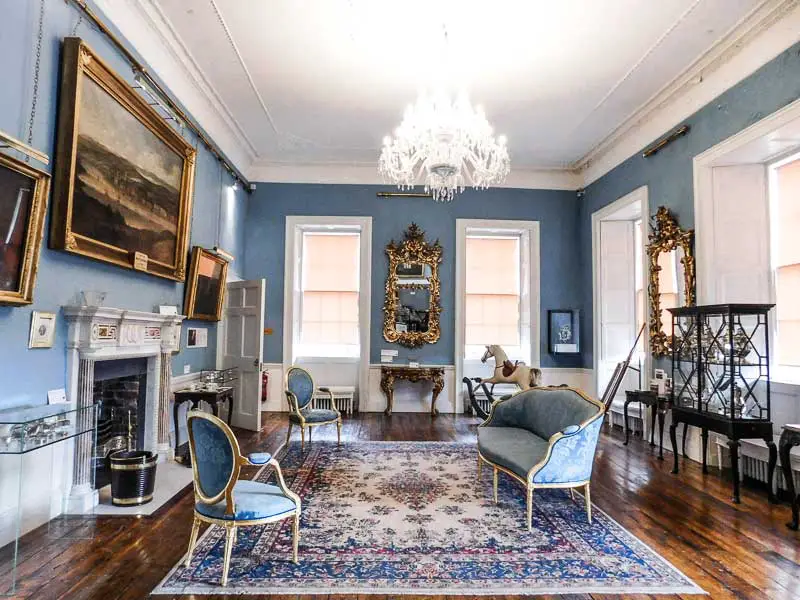
Wexford
An hour’s drive east of Waterford, Wexford is another city founded by the Vikings. Although not as rich in heritage attractions to explore as the previously mentioned cities, Wexford is the perfect spot for a night’s stopover.
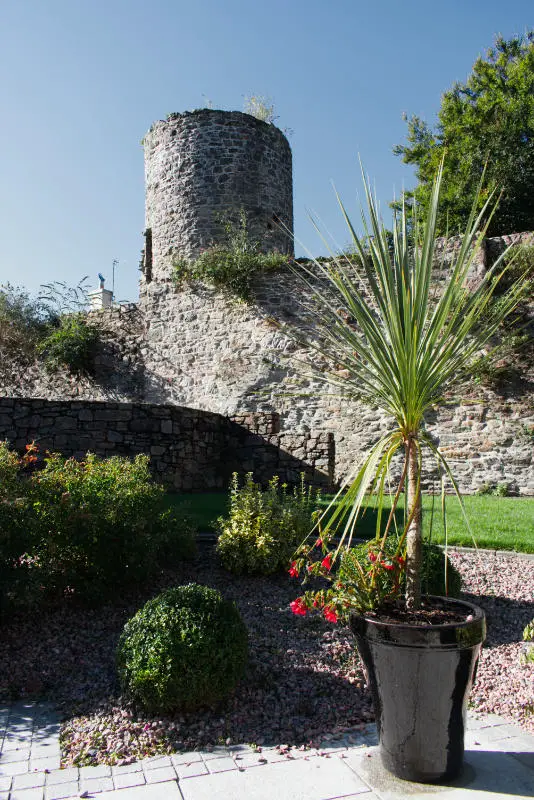
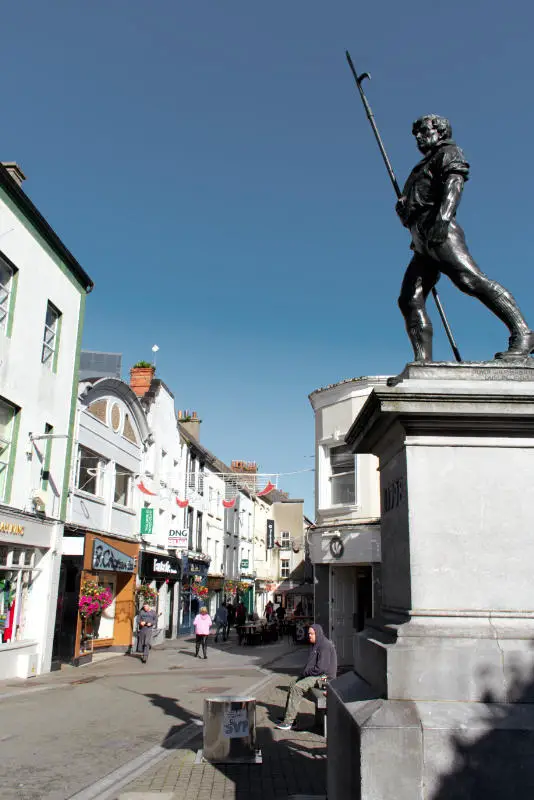
What makes Wexford stand out to me is the quaint and relaxed feel you can’t help but notice as you wander its streets. The small city is bustling with shops, cafés, and restaurants. Not a hugely touristy destination, Wexford has maintained a tranquil atmosphere that allows you to enjoy a truly authentic Irish experience as you browse its bookshops or dine al fresco among locals.
Where to sleep in Wexford:
- The Riverbank House Hotel: I highly recommend this 3-star boutique hotel, just a 10-minute walk from the city centre. Check out my full review of the Riverbank House Hotel for all the details.
- Talbot Hotel Wexford: This 4-star hotel overlooking the harbour provides all the comfort you need, and even features a swimming pool for relaxation after a day on the road.
Day 3 – East County Wicklow
Driving back to Dublin, you’ll have the opportunity to explore two major sites in County Wicklow: Glendalough and Powerscourt.
Glendalough Monastic Site
From Wexford, allocate up to two hours to reach Glendalough. As mentioned earlier, Glendalough’s monastic settlement was of great religious significance and a centre of power, attracting thousands of pilgrims in the Middle Ages. Today, the remains of the churches and the round tower, set against the backdrop of the Glendalough valley, provide visitors with one of the most picturesque experiences of Ireland.
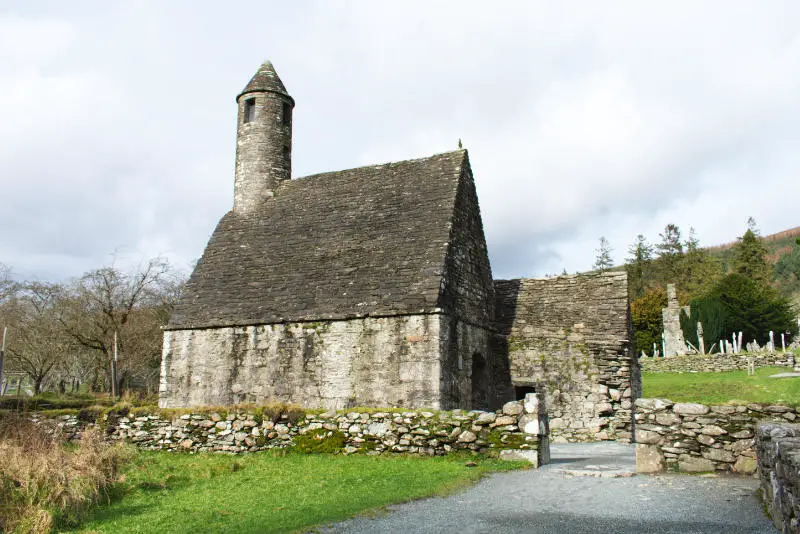
Powerscourt Gardens
County Wicklow is famous for its beautiful gardens, boasting species from the four corners of the world. If you only have time to visit one, however, Powerscourt should be at the top of your list.
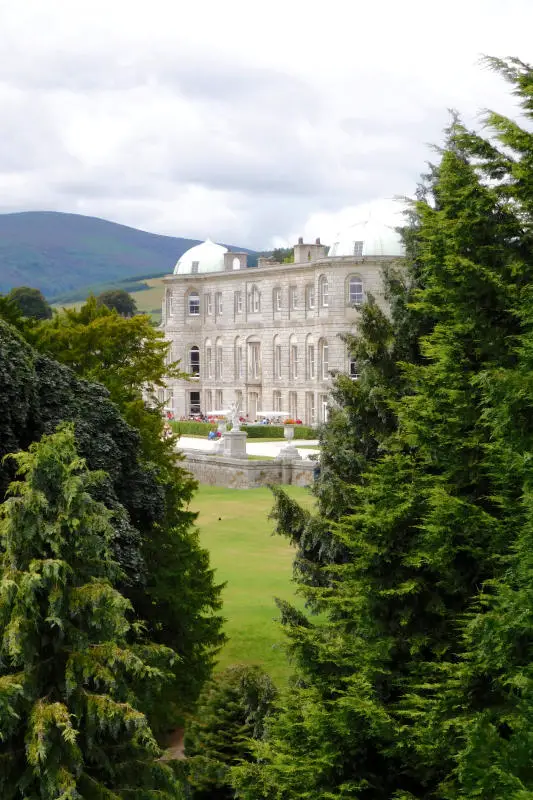
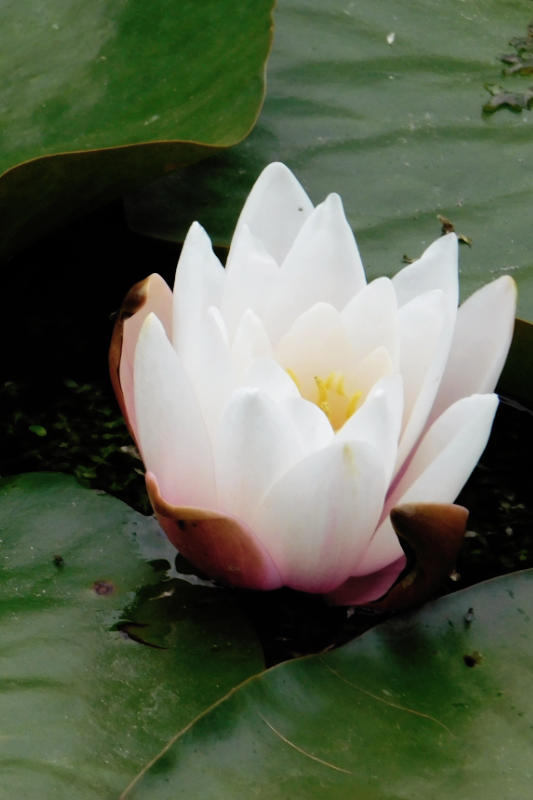
The vast estate is a feast for the eyes, with countless surprises waiting at each turn of its winding paths. Don’t forget to climb the Pepperpot tower to see the gardens from above. Keep an eye on your watch, though, as you could easily lose track of time while you wander the whopping 47 acres of perfectly manicured gardens.
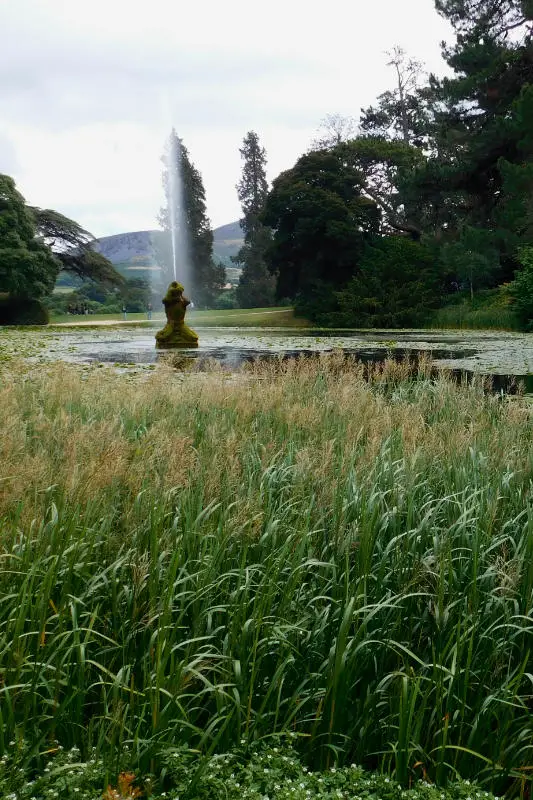
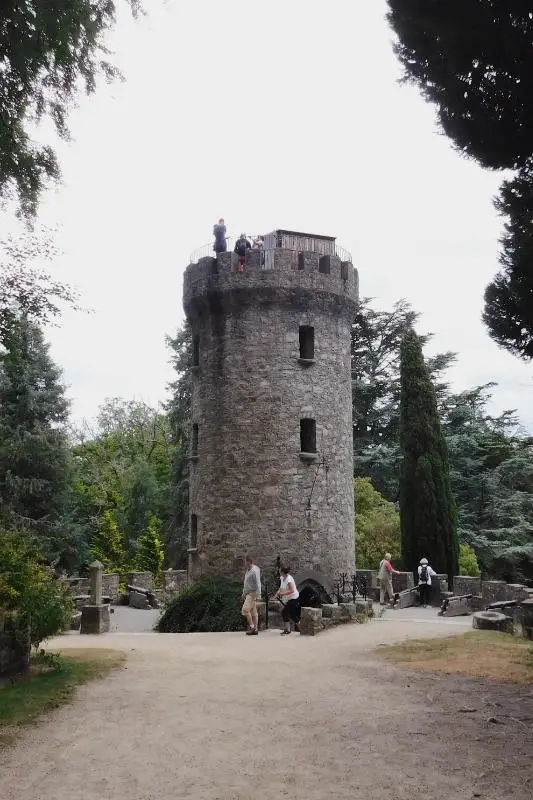
From Powerscourt Gardens, you’ll need approximately an hour to drop off your rental car at Dublin airport. Always keep in mind that traffic on the M50 can be very heavy and slow after 4 pm.
To wrap up, embarking on a 3-day road trip through the east of Ireland promises unforgettable experiences and the thrill of discovering the country’s unique heritage. Whether you’re immersing yourself in the historic wonders of the Boyne Valley or taking in the stunning landscapes of Wicklow, each journey offers its own unique charm. For those seeking further adventure, consider a road trip from Dublin to Belfast, another captivating itinerary across the island. Whichever route you choose, Ireland’s roads lead to unforgettable sights and breathtaking scenery.
Disclaimer: This post may contain affiliate links. If you click on a link, I earn a little money at no extra cost to you.
RELATED POSTS

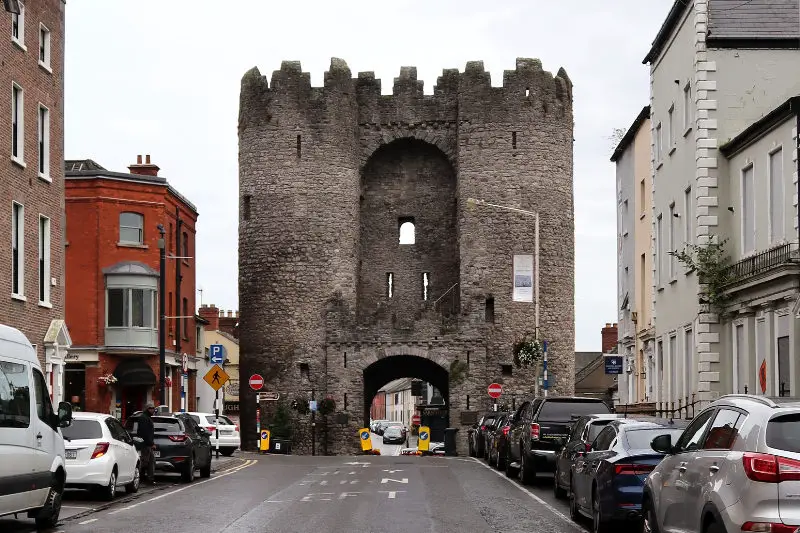
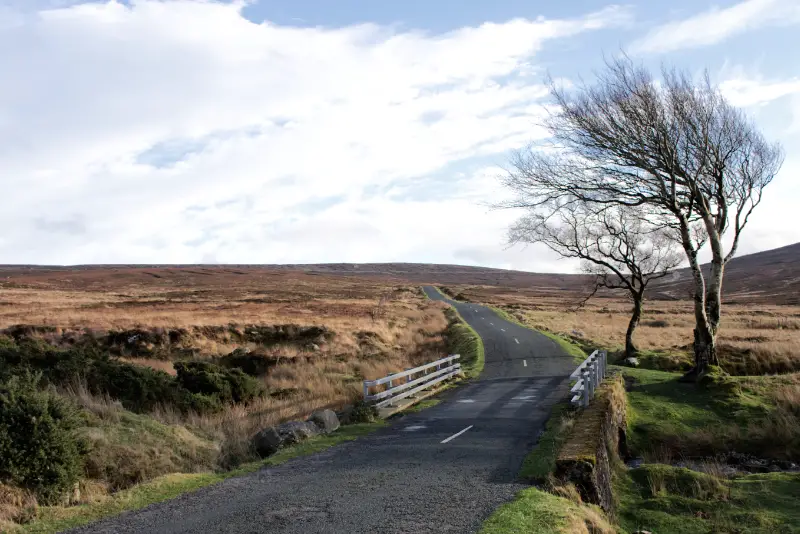
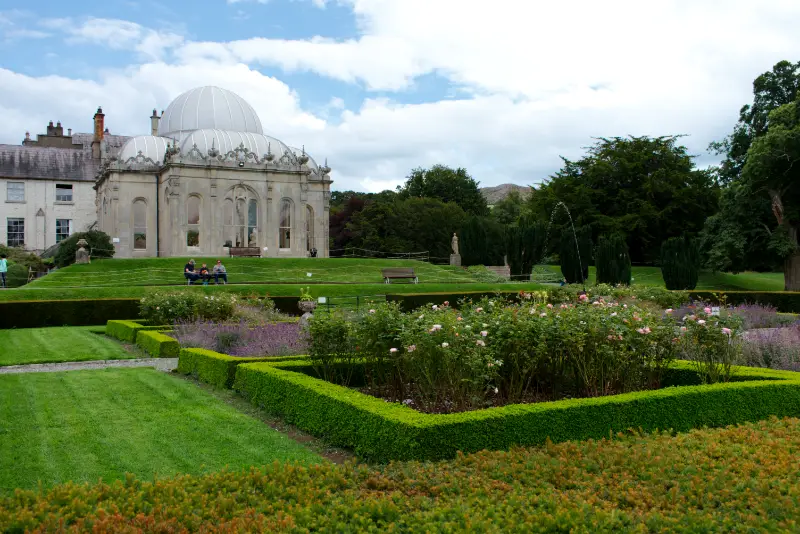
Leave a Reply